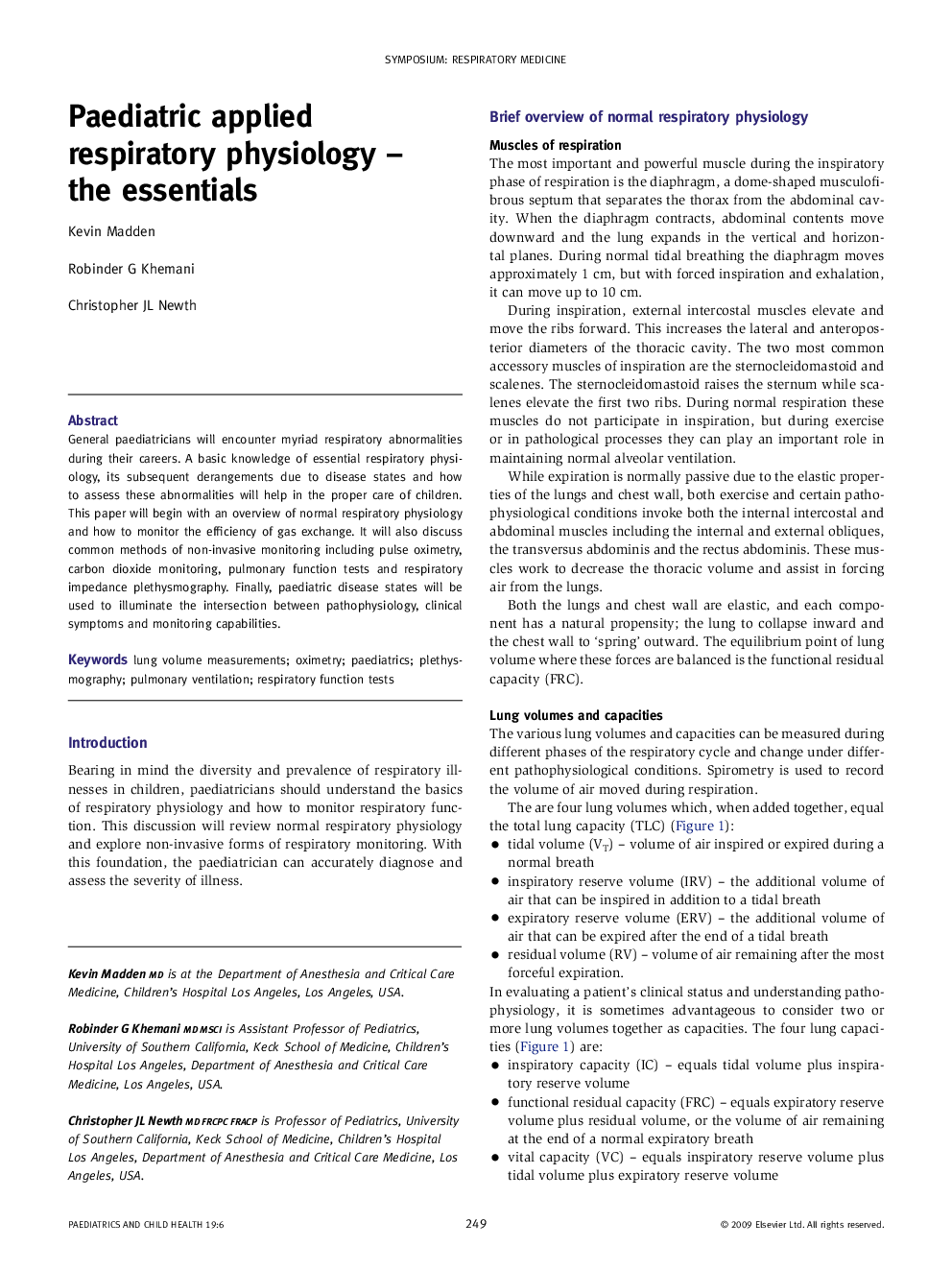| Article ID | Journal | Published Year | Pages | File Type |
|---|---|---|---|---|
| 4173061 | Paediatrics and Child Health | 2009 | 8 Pages |
Abstract
General paediatricians will encounter myriad respiratory abnormalities during their careers. A basic knowledge of essential respiratory physiology, its subsequent derangements due to disease states and how to assess these abnormalities will help in the proper care of children. This paper will begin with an overview of normal respiratory physiology and how to monitor the efficiency of gas exchange. It will also discuss common methods of non-invasive monitoring including pulse oximetry, carbon dioxide monitoring, pulmonary function tests and respiratory impedance plethysmography. Finally, paediatric disease states will be used to illuminate the intersection between pathophysiology, clinical symptoms and monitoring capabilities.
Keywords
Related Topics
Health Sciences
Medicine and Dentistry
Perinatology, Pediatrics and Child Health
Authors
Kevin Madden, Robinder G. Khemani, Christopher J.L. Newth,
